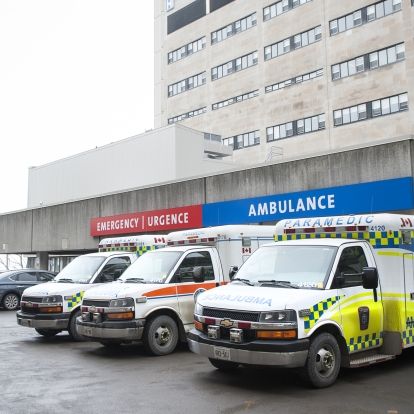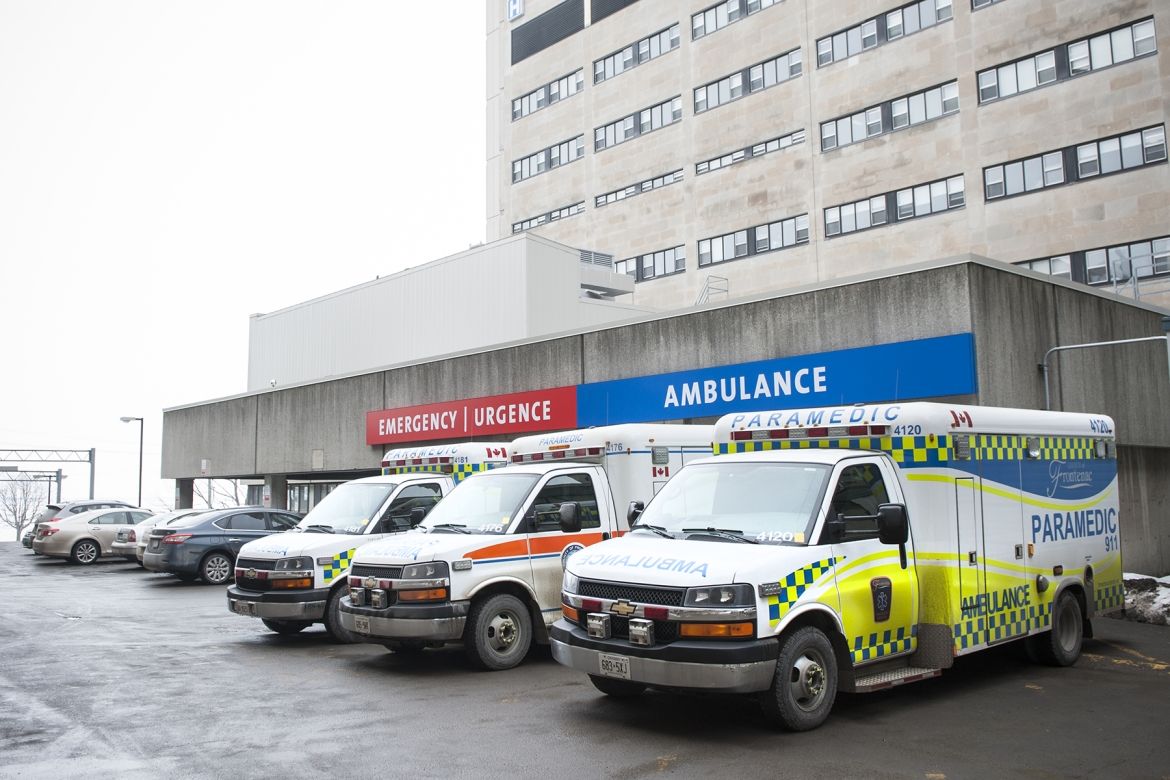Effective immediately masking is required for everyone when present on all inpatient units, in the Emergency Department (ED), the Urgent Care Centre (UCC), and the Children’s Outpatient Centre (COPC).

Kingston Health Sciences Centre (KHSC) has recently seen an impressive jump in rankings for emergency wait-times in Ontario hospitals. KHSC’s overall emergency wait-times have recently improved from 53 to 28 best in the province.
When looking at wait times for admitted patients who are waiting for a bed on an inpatient unit, KHSC has improved from 61 to 24 best.
“It’s unheard of to climb the rankings so quickly, especially considering the types of complex cases that arrive at our KGH site” says Carol McIntosh, Director of Ambulatory Clinics and Emergency Care. “With support and the hard work of teams across the hospital we are improving faster than everyone else.”
Over the past year, KHSC was able to cut the number of hours a patient spent waiting in the Emergency Department for an inpatient hospital bed by nearly half. The time spent waiting to be initially assessed by a physician also improved to the 15 best time in Ontario.
Meanwhile, KHSC continues to have some of the best ambulance offload times in the province, ranging between four to six minutes.
Efforts across the organization are contributing to the decreased wait-times, which include the work of a team of internal medicine care providers who operate the Admission Transfer unit (ATU) located at the KGH site. This space, which was repurposed and opened in March of 2017, is designed to improve patient flow by freeing up Emergency Department beds that are occupied by patients who have been admitted to the hospital and are waiting for an inpatient bed upstairs.
“After patients have been admitted, they need wait for a bed to open up on an inpatient unit. By moving admitted patients into the ATU while they wait for a bed, we can free up spaces for patients to come into the ED to be seen by our health-care teams which decreases wait-times,” says McIntosh.
Recent funding from the South East Local Health Integration Network has allowed for the creation of a new position to oversee patient flow within the hospital. The addition of the position has had a positive impact, helping optimize bed utilization and timely transfer of patients between units.
Other initiatives that have contributed to improved wait-times include a program called Home First, which helps identify if a patient simply needs more support in their home environment rather than being admitted to the hospital. A new clinic that operates within the Urgent Care Centre at the Hotel Dieu Hospital site is also helping, as it gives patients with multiple chronic conditions access to care from a nurse practitioner, reducing repeat visits to the ED.
Earlier this winter, KHSC developed a surge protocol in response to a higher than usual volume of patients seeking hospital treatment for influenza. The Ministry of Health and Long-Term Care also provided KHSC with additional funding this winter to open extra surge beds during the busy flu season. Staff on inpatient units provided support, working during this time to accommodate a higher than usual volume of patients.
“Staff on the inpatient floors made phenomenal efforts while under a tremendous amount of pressure to care for these extra patients,” says McIntosh. “While we see the end result of these efforts in emergency wait-times, these improvements during a time of increased patient volumes could not happen without the hard work and dedication of every department in the hospital.”
It’s a thought echoed by Mike McDonald, KHSC’s Executive Vice President of Patient Care and Community Partnerships.
“This is good news for our community and we thank our teams for continuing to work hard, both to sustain our improvements and to continue to ensure we reduce wait times for patients who need emergency care.”
Gallery


KHSC continues to have some of the best ambulance offload times in the province, ranging between four to six minutes



